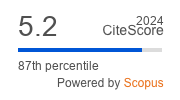Article | Open Access
Making Trade-Offs Visible: Theoretical and Methodological Considerations about the Relationship between Dimensions and Institutions of Democracy and Empirical Findings
| Views: | 5463 | | | Downloads: | 2627 |
Abstract: Whereas the measurement of the quality of democracy focused on the rough differentiation of democracies and autocracies in the beginning (e.g. Vanhanen, Polity, Freedom House), the focal point of newer instruments is the assessment of the quality of established democracies. In this context, tensions resp. trade-offs between dimensions of democracy are discussed as well (e.g. Democracy Barometer, Varieties of Democracy). However, these approaches lack a systematic discussion of trade-offs and they are not able to show trade-offs empirically. We address this research desideratum in a three-step process: Firstly, we propose a new conceptual approach, which distinguishes between two different modes of relationships between dimensions: mutual reinforcing effects and a give-and-take relationship (trade-offs) between dimensions. By introducing our measurement tool, Democracy Matrix, we finally locate mutually reinforcing effects as well as trade-offs. Secondly, we provide a new methodological approach to measure trade-offs. While one measuring strategy captures the mutual reinforcing effects, the other strategy employs indicators, which serve to gauge trade-offs. Thirdly, we demonstrate empirical findings of our measurement drawing on the Varieties of Democracy dataset. Incorporating trade-offs into the measurement enables us to identify various profiles of democracy (libertarian, egalitarian and control-focused democracy) via the quality of its dimensions.
Keywords: control-focused democracy; democracy; Democracy Matrix; egalitarian democracy; libertarian democracy; measurement of democracy; profile of democracy; quality of democracy; trade-off; Varieties of Democracy
Published:
© Hans-Joachim Lauth, Oliver Schlenkrich. This is an open access article distributed under the terms of the Creative Commons Attribution 4.0 license (http://creativecommons.org/licenses/by/4.0), which permits any use, distribution, and reproduction of the work without further permission provided the original author(s) and source are credited.


